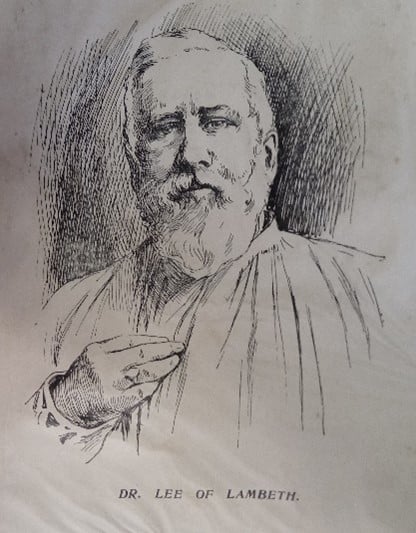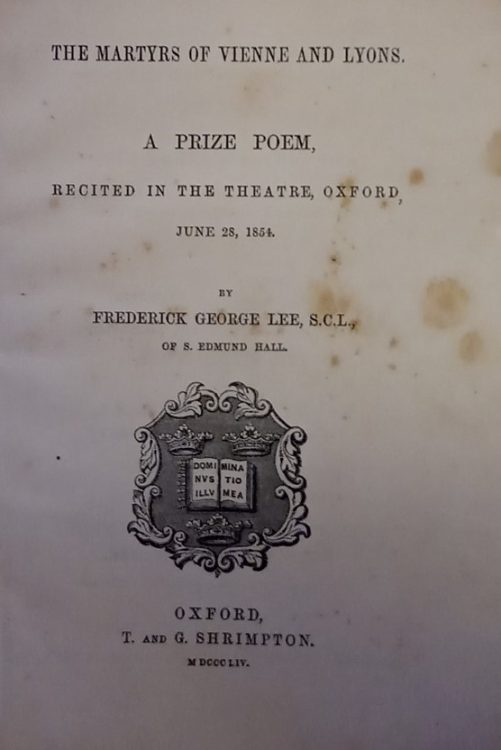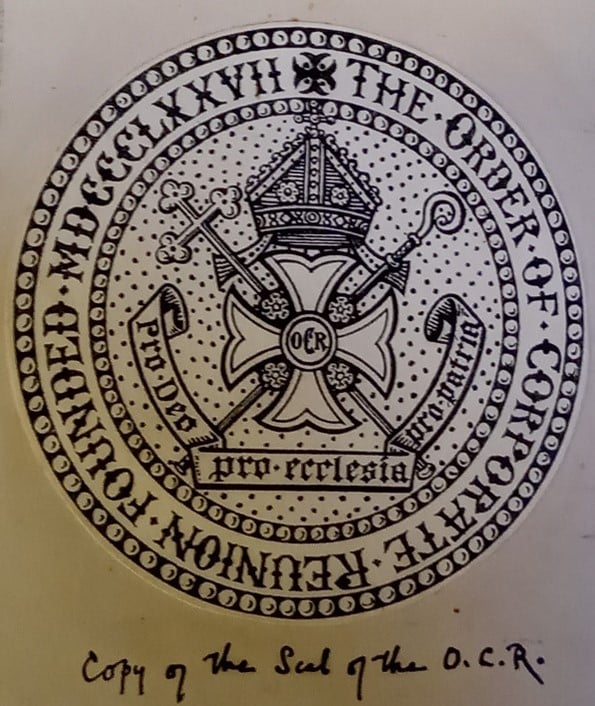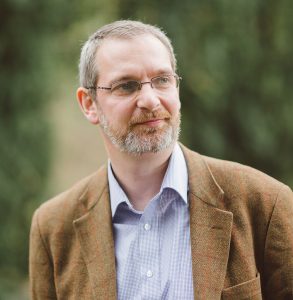Teddy Hall’s self-proclaimed Bishop of Dorchester
13 Oct 2021|Rob Petre
- Library, Arts & Archives

Dr F G Lee spent his life as a parish priest in the Established Church; indeed the parish in which he spent the bulk of his career meant he was a neighbour of the Archbishop of Canterbury at Lambeth Palace. However, his ecclesiastical superiors did not treat Lee with as much enthusiasm as his parishioners and his fellow ecumenicals did; his parish in Lambeth was described as an ‘insalubrious backwater’ and the church rather left him to his own devices.
When the Old Library was refurbished, several items that might more properly be described as archives were handed over to my keeping, including a scrapbook on the life of F G Lee compiled by Humphrey Baskerville, himself a dedicated Oxford antiquarian. The volume covers the life of Lee from his time in Oxford to his death in 1902.
Lee matriculated from Teddy Hall on 23rd October 1851 at the age of 19. He left without graduating in 1854 but his time in Oxford was not unproductive. In 1854 his Newdigate Prize Poem on the Martyrs of Vienne and Lyons was recited in the Sheldonian; it was published by Shrimptons and went to 3 editions.

From the Hall he went to Cuddesdon Theological College, being ordained in 1856. His private income meant that he did not need parish work; this independence from church authorities also meant that he could write as he wished on such matters as restoring ritual to Anglican services, using authentic ecclesiastical vestments and promoting unity with the Roman Catholics and the Orthodox Churches. When he did become an incumbent of a parish in 1860 in Aberdeen, his reputation preceded him. His supporters there built him a new church, but the Bishop of Aberdeen refused to consecrate it until Lee made certain promises regarding his ritual practices. Lee refused, and left the parish in 1864. In 1867 he arrived at All Souls’, Lambeth, where he stayed until retirement in 1899. Whilst there he experimented with new rituals for church ceremonies (including writing the music), created a system of poor relief using his own money and started up a series of church processions that eventually numbered over 100 participants.
Written works flowed from his pen; there are 72 separate entries under his name in the British Library catalogue, among them a tribute to another clergyman poet, R S Hawker of Morwenstow, who created the harvest festival and composed The Song of the Western Men (‘Trelawny’), a poem on the Seven Bishops’ trial that has become a Cornish anthem; several volumes of sermons; and letters of advice to such politicians as William Gladstone and Gathorne Gathorne-Hardy (Home Secretary in the late 1860s and opponent of disestablishment of the church).
Certainly one of Lee’s passions seems odd to modern eyes; he was an ardent Jacobite, believing firmly in the rights of the descendants of James II and VII to be the true monarch; even the woman who could claim to be the rightful Queen, Maria Theresa of Austria-Este, Queen of Bavaria, made no such claims for herself or her family. (In fact this family of descendants of James II had not pressed any claim since 1807).
If Lee is remembered at all today, it was because of his tireless if unavailing efforts at re-uniting a divided Christian church. One of his movements was quite public, the Association for the Promotion of the Union of Christendom, for which he edited its journal The Union Newspaper. The other movement was rather more shadowy; in 1877 he founded the Order of Corporate Reunion, when he and 2 others were said to have been ordained as bishops in the Apostolic Succession by 3 unidentified bishops of impeccable standing; the ceremony took place on a boat on a river when Lee was on a trip to Italy. The theory was that any Anglican clergyman who was in any doubt about the validity of his priestly orders could apply to Lee and be re-ordained; eventually this would re-establish the Apostolic Succession of Anglican orders. It was at this time that Lee took the title of Bishop of Dorchester, named after the Anglo-Saxon see that was replaced by Lincoln in 1072, and is in no way connected to the modern Bishop of Dorchester. The order was necessarily secretive, and so it is impossible to know if any Anglican priests availed themselves of his services, or indeed if any such ordination ever took place.

His death on 23 January 1902 was a cause of controversy, especially within his family. Like Rev Hawker before him, it was claimed that he converted to Roman Catholicism in his last days. Father Best of the London Oratory possibly received him into the faith on 11 December 1901, but he also continued to receive visits from his local Anglican priest, one Rev Carter, and gave money to this clergyman on the day of his death for parish charities. Some of his family were sure of his conversion, other were sure he remained in the Church of England. As one of the cuttings in the scrapbook says, ‘the mystery, like that which surrounds Dr Lee’s connection with the Order of Corporate Reunion, will probably never be cleared up’.
A final note: the doctorate that gave Frederick George his title was not an Oxford degree; it was awarded to him in 1879 by Washington and Lee University, Virginia, USA, in recognition of his efforts to unite the churches.
Category: Library, Arts & Archives
Author

Rob
Petre
Rob is the College Archivist. His role is to preserve the documentary heritage of St Edmund Hall and to try and answer questions on any aspect of the Hall’s history with reference to our archive collection.